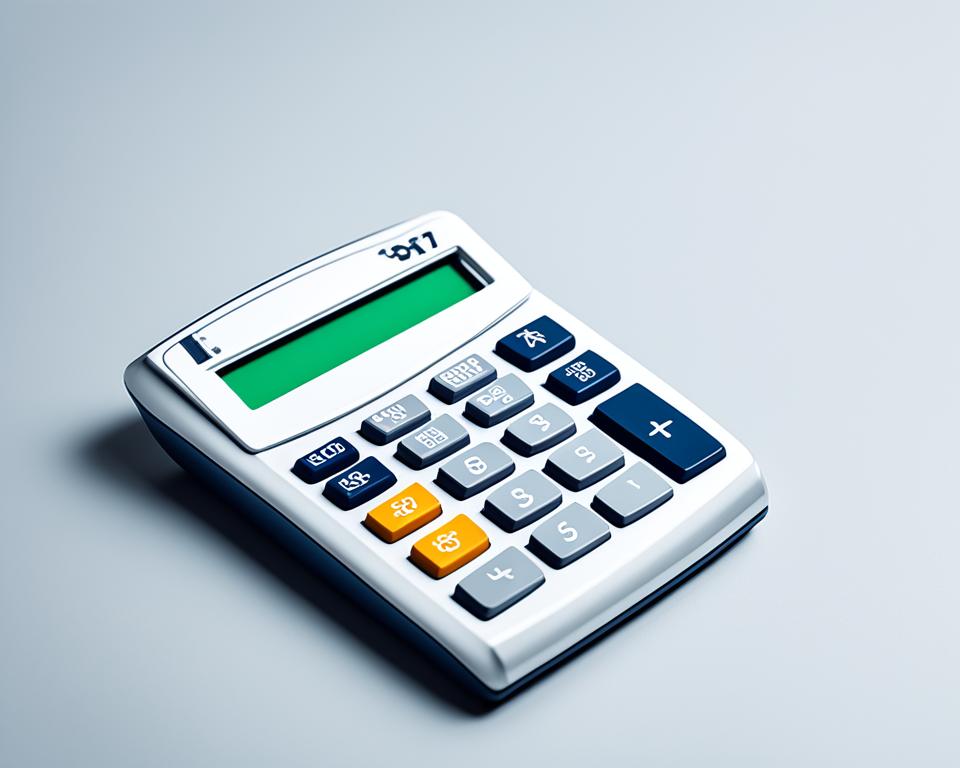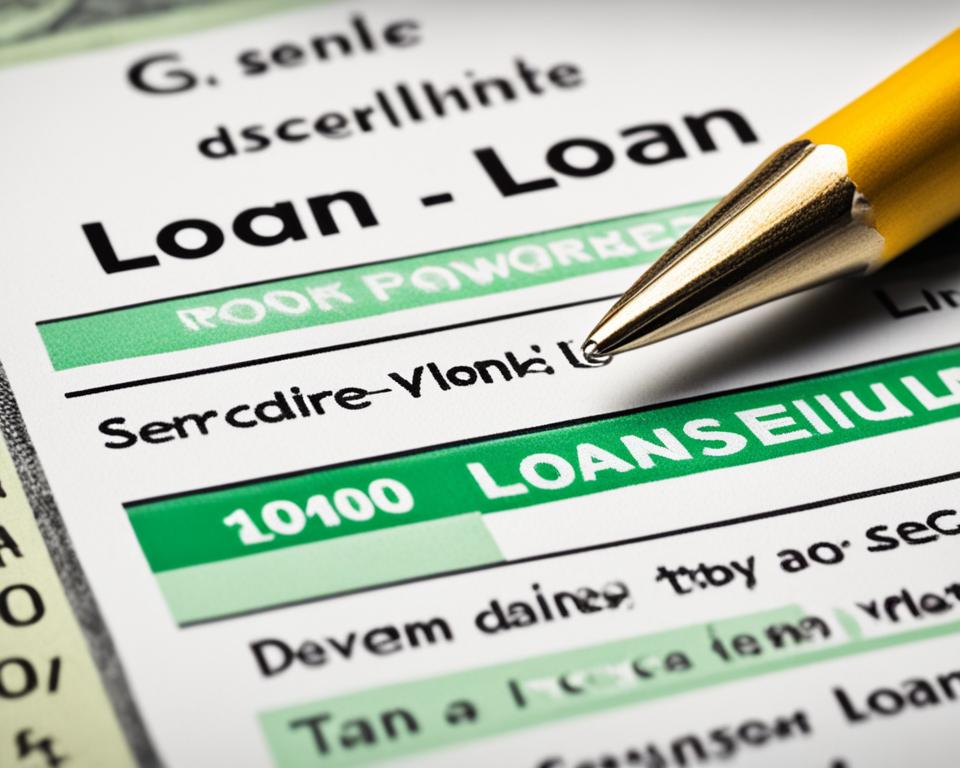Are you looking for a way to finance your purchases or consolidate your debt? Personal loans might be the solution you’re searching for. Whether you’re familiar with them or just starting to explore your options, understanding the basics of personal loans is essential.
Personal loans can be either secured or unsecured, and they typically involve receiving a lump sum of money that you’ll pay back with interest over a fixed period of time. The accessibility of personal loans has increased with the emergence of digital offerings from financial technology startups. In fact, in 2018, unsecured personal loans reached a whopping $138 billion, with much of the growth coming from loans originated by FinTech companies.
So, how do personal loans actually work? Let’s dive into it and explore the ins and outs of personal loans.
Key Takeaways:
- Personal loans provide a popular financing option for purchases and debt consolidation.
- They can be either secured or unsecured.
- Secured personal loans require collateral, while unsecured personal loans do not.
- Personal loans can be issued as a lump sum or as a line of credit.
- Factors such as credit score and income affect personal loan eligibility.
Types of Personal Loans: Secured vs. Unsecured
When it comes to personal loans, there are two main types to consider: secured personal loans and unsecured personal loans. Understanding the difference between the two can help you make an informed decision when seeking financing.
Secured Personal Loans
A secured personal loan requires collateral, which is an asset that you pledge as security for the loan. If you default on the loan, the lender has the right to seize the collateral to recover their losses. Examples of secured personal loans include mortgages and auto loans.
“A secured personal loan provides lenders with an added layer of protection, thus allowing them to offer lower interest rates compared to unsecured loans.” – John Smith, Financial Advisor
Secured personal loans are often favored by borrowers who have valuable assets to offer as collateral and who are looking to borrow larger loan amounts or secure better interest rates.
Unsecured Personal Loans
Unlike secured loans, unsecured personal loans do not require collateral. Instead, they are based on the borrower’s creditworthiness and income. This means that the lender is taking on more risk since there is no asset to claim if the borrower defaults on the loan.
“Unsecured personal loans are a popular choice for individuals who don’t have collateral to offer or who want to avoid the risk of losing their assets.” – Jane Anderson, Loan Specialist
Unsecured personal loans can be used for a variety of purposes, such as financing home improvements, paying for a wedding, or consolidating high-interest debt. However, it’s important to note that defaulting on an unsecured personal loan can have serious consequences, including a negative impact on your credit score and the possibility of legal action by the lender.
Comparing Secured and Unsecured Personal Loans
To help you understand the differences between secured and unsecured personal loans, here’s a comparison chart:
| Secured Personal Loans | Unsecured Personal Loans |
|---|---|
| Require collateral | Do not require collateral |
| Tend to offer lower interest rates | May have higher interest rates |
| Can be used for specific purposes (e.g., mortgages, auto loans) | Can be used for various purposes |
| Risk losing collateral if loan is not repaid | Default can negatively impact credit score and may result in legal action |
When deciding between a secured personal loan and an unsecured personal loan, it’s important to consider your financial situation, the purpose of the loan, and your willingness to offer collateral. Additionally, evaluating the risk and potential consequences of defaulting on an unsecured loan is crucial.
Borrowing Options: Lump Sum vs. Line of Credit
When it comes to borrowing money, personal loans offer two primary options: lump sum personal loans and personal lines of credit. Each option has its own unique features and benefits, catering to different financial needs and preferences.
Lump Sum Personal Loan
A lump sum personal loan is a borrowing option where the lender provides the borrower with a predetermined amount of money upfront. This lump sum is typically deposited directly into the borrower’s bank account, allowing them to use the funds as needed.
With a lump sum personal loan, the borrower agrees to repay the loan amount, along with any interest and fees, over a fixed period of time. Monthly payments are made to the lender until the entire loan amount, including interest, is fully repaid.
This type of loan is often used for specific purchases or financial needs that require a larger sum of money upfront, such as home renovations, debt consolidation, or major purchases.
Personal Line of Credit
A personal line of credit, on the other hand, provides borrowers with a flexible borrowing option. Instead of receiving a lump sum of money, borrowers are given access to a predetermined credit limit that they can draw from as needed.
With a personal line of credit, borrowers have the freedom to borrow smaller amounts or larger sums up to their credit limit, depending on their current financial needs. They only pay interest and fees on the amount they borrow.
Repayment terms for personal lines of credit may vary, but typically, borrowers are required to make minimum monthly payments based on their outstanding balance.
Personal lines of credit are often used for ongoing or unpredictable expenses, such as emergency expenses, educational costs, or as a safety net for unexpected financial challenges.
The Key Differences
The choice between a lump sum personal loan and a personal line of credit depends on individual financial circumstances and borrowing preferences. Here’s a side-by-side comparison to help you understand the key differences:
| Lump Sum Personal Loan | Personal Line of Credit |
|---|---|
| Provides a predetermined amount of money upfront | Offers access to a predetermined credit limit |
| Repayment is made in fixed monthly installments | Repayment is flexible, based on the borrowed amount |
| Used for specific purchases or financial needs | Used for ongoing or unpredictable expenses |
| Interest and fees are calculated on the entire loan amount | Interest and fees are calculated on the borrowed amount |
Ultimately, the choice between a lump sum personal loan and a personal line of credit depends on your financial goals, borrowing needs, and personal preferences. It’s important to carefully consider the terms and conditions of each option, as well as your own financial situation, before making a decision.
Now that you understand the differences between a lump sum personal loan and a personal line of credit, you can make an informed decision based on your personal financial needs.
Factors Affecting Personal Loan Eligibility
When applying for a personal loan, several factors come into play to determine eligibility. Lenders carefully assess various aspects of the borrower’s financial profile to gauge their ability to repay the loan. In this section, we will explore the key factors that lenders consider when evaluating personal loan applications.
Credit Score
A borrower’s credit score plays a vital role in determining personal loan eligibility. Lenders rely on credit scores to assess the borrower’s creditworthiness and gauge their likelihood of repaying the loan. A higher credit score indicates a strong credit history and responsible financial behavior, making it more likely for the borrower to secure a loan with favorable terms, such as lower interest rates and higher borrowing limits.
Income
Income is another crucial factor lenders consider when evaluating personal loan applications. Lenders want to ensure that borrowers have a stable source of income to afford the loan payments. Adequate income demonstrates the borrower’s capacity to repay the loan in a timely manner. Lenders typically calculate the debt-to-income ratio (DTI) to assess the borrower’s ability to manage their existing debt and take on additional financial obligations. Higher income levels generally increase the chances of loan approval.
Employment History
Lenders also assess the borrower’s employment history as part of the loan eligibility criteria. A stable employment history indicates consistency in income and employment stability, adding to the borrower’s credibility and ability to repay the loan. Lenders typically look for a track record of steady employment, with a preference for full-time employment or long-term employment with the same employer.
When applying for a personal loan, it’s essential to present a strong credit score, stable income, and a solid employment history to enhance your chances of loan approval and secure favorable loan terms.
By evaluating these factors, lenders can assess the borrower’s creditworthiness and determine their eligibility for a personal loan. A thorough evaluation helps lenders mitigate risks and ensures that borrowers can comfortably meet their loan obligations.
Factors Affecting Personal Loan Eligibility
| Factors | Importance |
|---|---|
| Credit Score | High |
| Income | High |
| Debt-to-Income Ratio (DTI) | Medium |
| Employment History | Medium |
Table: Factors Affecting Personal Loan Eligibility
Understanding Interest Rates and Fees
When it comes to personal loans, interest rates and fees play a crucial role in determining the cost of borrowing. It’s important to understand how these factors can impact your overall loan experience. Let’s take a closer look at personal loan interest rates, loan origination fees, and the annual percentage rate (APR) that borrowers need to consider.
Personal Loan Interest Rates
Personal loan interest rates vary based on the borrower’s creditworthiness.
When lenders evaluate your loan application, they take your credit score into consideration. A higher credit score typically results in a lower interest rate, meaning you’ll pay less over the life of the loan. On the other hand, if you have a lower credit score, lenders might see you as a higher risk borrower and assign a higher interest rate to compensate for that risk.
To illustrate this further, here’s a table that shows how your credit score can impact your personal loan interest rates:
| Credit Score | Interest Rate |
|---|---|
| Excellent (720+) | 7.5% |
| Good (680-719) | 9.5% |
| Fair (640-679) | 12% |
| Poor (639 or below) | 15% |
As you can see, having a higher credit score can significantly reduce the interest rate you pay on your personal loan. It’s crucial to maintain good credit habits to improve your creditworthiness and secure lower interest rates.
Loan Origination Fee
A loan origination fee is a one-time charge imposed by lenders for processing your loan application.

It’s important to note that not all lenders charge a loan origination fee. However, if a lender does charge this fee, it is typically a percentage of the total loan amount. For example, a lender may charge a 1% origination fee on a $10,000 loan, resulting in a $100 fee.
It’s advisable to consider the loan origination fee when evaluating different loan offers. While a lower interest rate may appear more attractive, a high origination fee can offset the savings. Always compare the total cost of the loan, including both interest rates and fees, to make an informed decision.
Annual Percentage Rate (APR)
The annual percentage rate (APR) is a comprehensive measure of a loan’s total cost, including both the interest rate and any applicable fees.
“The APR provides a complete understanding of how much the loan will cost.”
When comparing loan offers, pay attention to the APR rather than just the interest rate. The APR takes into account both the interest rate and any additional fees, providing a more accurate representation of the loan’s overall cost. By considering the APR, you can ensure that you are comparing apples to apples and making an informed decision about the best loan option for your needs.
Being aware of personal loan interest rates, loan origination fees, and APR can help you understand the true cost of borrowing and make smarter financial decisions.
Applying for a Personal Loan
When it comes to applying for a personal loan, there are a few key steps to keep in mind. In this section, I’ll guide you through the personal loan application process, including the documentation required and the option of pre-qualification.
Documentation Required
When you’re ready to apply for a personal loan, you’ll need to gather some essential documentation to support your application. Lenders typically require the following:
| Documentation | Description |
|---|---|
| Recent pay stubs | Proof of income to demonstrate your ability to repay the loan |
| Personal information | Details such as your address, driver’s license, and contact information |
| Bank account information | Provide your bank account details for loan disbursement and repayment |
By having these documents readily available, you can streamline the loan application process and increase your chances of approval.
Pre-Qualification
Before diving into the full loan application process, some lenders offer a pre-qualification option. Pre-qualification allows you to check your eligibility for a personal loan without impacting your credit score. It’s a helpful way to assess your chances of approval and determine the loan terms and rates you may qualify for.
“Pre-qualification is a helpful tool that gives borrowers a clear understanding of what they can afford and what loan options are available to them,” says Emily Johnson, a loan officer at XYZ Bank.
By utilizing pre-qualification, you can confidently proceed with the loan application process, knowing you meet the initial criteria set by the lender.
As you navigate the personal loan application journey, keep in mind that it’s essential to shop around and compare offers from different lenders. Each lender may have varying requirements, terms, and rates, which can significantly impact your borrowing experience. Take the time to find the loan that best suits your needs and financial goals.
Receiving and Repaying a Personal Loan
After being approved for a personal loan, you can expect the funds to be deposited directly into your bank account. This convenient disbursement method ensures that you have quick access to the money you need for your financial goals.
Once you have received the loan, it’s important to understand the repayment process. Typically, personal loans require monthly payments to be made towards the loan amount and the interest accrued. You have the option to make these monthly payments manually or set up autopay, which automatically deducts the payment from your bank account on a specified date.
Personal loan terms can vary based on the lender and your specific loan agreement. However, most lenders expect borrowers to start making repayments within 30 days of receiving the loan funds. It’s essential to carefully review your loan terms and be prepared to fulfill your monthly payment obligations.
In some cases, individuals may choose to pay off their personal loan before the agreed-upon term. While early payoff can be a great option for saving on interest, it’s important to be aware that some lenders may impose an early payoff penalty. This penalty is typically a fee charged for paying off the loan ahead of schedule. Before deciding to pay off your personal loan early, make sure to check with your lender to understand if any penalties or fees apply.
How Personal Loans Impact Credit Scores
Personal loans can have a significant impact on credit scores, both positively and negatively. Understanding how these loans affect credit standing is crucial for borrowers seeking financial stability.
When it comes to credit scores, payment history plays a crucial role. Making timely monthly payments on personal loans can demonstrate responsible financial management and have a positive impact on credit scores. On the other hand, late or missed payments can have a negative effect, lowering credit scores and potentially limiting future borrowing opportunities.
Repayment history isn’t the only factor that determines credit scores. The credit utilization ratio, which is the amount of credit used compared to the total credit available, also plays a significant role. Personal loans can influence this ratio. If the loan is used to consolidate high-interest debt, it can lower the credit utilization ratio and improve credit scores. However, taking on additional debt without reducing overall credit utilization can have the opposite effect.
It’s important for borrowers to manage their personal loans responsibly and maintain a good payment history. This includes making all payments on time and keeping credit utilization low. By doing so, borrowers can improve their credit scores over time and increase their financial opportunities.
“Taking out a personal loan can be a smart financial move, but it’s essential to use it wisely and manage repayment responsibly to avoid any negative impact on credit scores.” – Financial Advisor, Jane Smith
Comparing Credit Impact: Personal Loans vs. Credit Cards
| Factor | Personal Loans | Credit Cards |
|---|---|---|
| Credit Utilization Ratio | Can lower if used for debt consolidation | Can increase if high balance compared to credit limit |
| Payment History | Positive impact with timely payments | Positive impact with timely payments |
| Available Credit | Does not affect available credit | Affects available credit and credit utilization ratio |
Comparison of how personal loans and credit cards impact credit scores
As shown in the table above, personal loans and credit cards differ in their impact on credit scores. While both types of credit can have a positive impact when payments are made on time, personal loans used for debt consolidation can lower the credit utilization ratio. Credit card utilization, on the other hand, can increase if the balance is high compared to the credit limit.
Managing personal loans and credit cards responsibly is essential for maintaining good credit standing. By understanding the impact of different types of credit on credit scores, borrowers can make informed decisions and work towards improving their financial health.
Benefits and Risks of Personal Loans
Personal loans are a popular choice for individuals seeking financial support. They offer a range of benefits that can help borrowers achieve their goals and manage their finances more effectively. However, it’s important to recognize and understand the potential risks associated with personal loans.
Benefits of Personal Loans
There are several advantages to obtaining a personal loan:
- Flexible repayment terms: Personal loans provide borrowers with the flexibility to choose a repayment plan that fits their financial situation and goals.
- Lower interest rates compared to credit cards: Personal loans typically offer lower interest rates compared to credit cards, making them an attractive option for debt consolidation and reducing overall interest costs.
- Ability to consolidate high-interest debt: Personal loans can be used to consolidate multiple debts, such as credit card balances or medical bills, into a single monthly payment. This can simplify finances and potentially lower interest rates.
Risks of Personal Loans
While personal loans offer various benefits, it’s essential to be aware of the potential risks:
- Potential for high interest rates: Depending on the borrower’s creditworthiness and financial history, personal loans can come with high interest rates. It’s crucial to compare rates from different lenders and consider the overall cost of the loan before committing.
- Fees: Some personal loans may have origination fees or other associated costs. These fees can add to the overall cost of the loan, so borrowers should carefully review the terms and conditions.
- Negative credit impact: Failing to repay a personal loan responsibly can have a negative impact on credit scores. Missed or late payments can result in penalties, increased interest rates, and potential damage to creditworthiness.
Before taking on a personal loan, it’s essential to carefully evaluate your financial situation, consider the potential benefits and risks, and choose a loan that aligns with your needs and repayment capabilities. By using personal loans responsibly and making timely payments, borrowers can harness the benefits and avoid potential pitfalls.
Conclusion
After exploring the world of personal loans, it’s clear that they offer a versatile solution for those looking to finance purchases or consolidate debt. With fixed repayment terms and interest rates, personal loans provide access to funds that can be used for various financial needs. However, it’s crucial for borrowers to assess their financial situation and creditworthiness before applying.
When considering a personal loan, it’s important to compare lenders and understand the terms and fees associated with each offer. By doing so, borrowers can make informed decisions that align with their financial goals. It’s also essential to borrow responsibly and make timely payments to maintain a good credit standing.
In conclusion, personal loans can be a valuable tool when used wisely. They provide the opportunity to fund important purchases or consolidate high-interest debt. However, it’s crucial for borrowers to carefully consider their financial circumstances, compare lenders, and borrow responsibly. By doing so, individuals can leverage personal loans to achieve their financial objectives and improve their overall financial well-being.
FAQ
What are personal loans and how do they work?
Personal loans are a popular choice for financing purchases or consolidating debt. They involve receiving a lump sum of money that is paid back over a fixed period of time with interest. Personal loans can be secured or unsecured and have become more accessible through digital offerings from financial technology startups.
What are the types of personal loans?
Personal loans can be secured or unsecured. Secured personal loans require collateral, while unsecured personal loans do not.
What are the borrowing options for personal loans?
Personal loans are typically issued as a lump sum of money, but borrowers can also choose a personal line of credit, which is a revolving line of credit with a predetermined limit.
What factors affect personal loan eligibility?
Lenders consider factors such as credit score, income, debt-to-income ratio, and employment history when determining personal loan eligibility.
How do personal loan interest rates and fees work?
Personal loan interest rates are based on the borrower’s creditworthiness. Some lenders may charge loan origination fees, and borrowers should compare annual percentage rates (APRs) to understand the total cost of the loan.
How do I apply for a personal loan?
To apply for a personal loan, borrowers need to provide documentation such as pay stubs, personal information, and bank account details. Some lenders offer a pre-qualification process to check eligibility without impacting credit scores.
How do I receive and repay a personal loan?
Once approved, the funds are deposited into the borrower’s bank account. Monthly payments can be made manually or through autopay. Repayment typically begins within 30 days, and some lenders may charge an early payoff penalty.
How do personal loans impact credit scores?
Timely payments can help improve credit scores, while late or missed payments can have a negative impact. Personal loan repayment history is one of several factors that affect credit scores.
What are the benefits and risks of personal loans?
Personal loans offer benefits such as flexible repayment terms and lower interest rates compared to credit cards. However, they come with risks including high interest rates, fees, and negative credit impact if not repaid responsibly.
Any other final thoughts on personal loans?
Personal loans are a versatile borrowing option that can provide access to funds with fixed terms and rates. It’s important to carefully consider personal financial situations and compare lender offers before taking on a personal loan.





